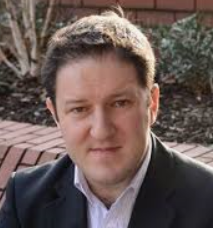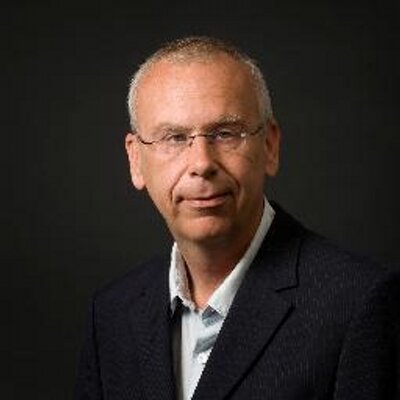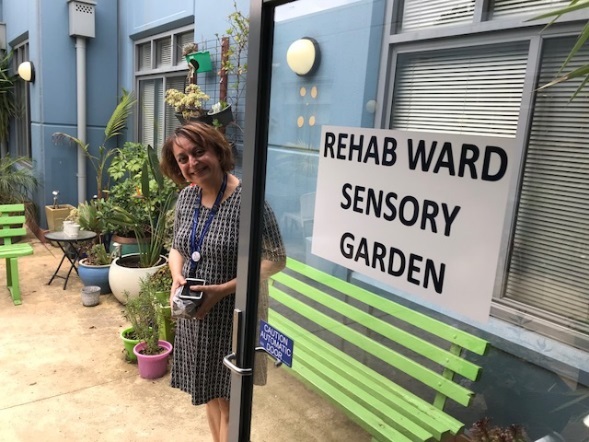2.13. Internationale samenwerking
2.13.1 Broadening horizons through international collaboration – the Anglo-Dutch Experience
dr. Adam Gordon, Clinical Associate Professor in Medicine of Older People at the University of Nottingham.

Geriatric medicine in the Netherlands is an entirely hospital-based specialty. Specialist care for older people in the community is provided by Elderly Care Physicians. This specialty evolved separately from geriatric medicine, largely to provide specialist care to the 100000 people living in Dutch Nursing Homes. Nursing home care in the Netherlands is provided free at the point of contact by the state. Routine care in the home is provided by resident Elderly Care Physicians.
As the Dutch government has sought to rationalise care of older people with frailty, supporting more care at home prior to moving to a nursing home, so elderly care physicians have found themselves seeing patients in their homes. As more patients have received step-down rehabilitation in nursing homes, so Elderly Care Physicians have become more specialised in geriatric rehabilitation. As discharge planning from acute hospital has become more complex, so Elderly Care Physicians have begun to provide in-reach assessment services to support discharge planning.
There are 1600 elderly care physicians in the Netherlands, compared with 225 Hospital Geriatricians. It’s as if the UK model of specialty geriatrics was flipped on its head, with community geriatrics making up the bulk of our work, rather than being a fringe (albeit growing) discipline. In working with Elderly Care physicians, the opportunity for organisational learning is considerable. In Britain we’re trying to understand how GPs (with or without geriatricians) can support care homes in more effective ways, and we’re trying to work out how geriatricians can support Discharge to Assess programmes using community based rehabilitation facilities. Our ability to experiment is limited by the fledgling nature of most community geriatrics services and the way in which our primary care colleagues find themselves always over-stretched. Dutch Elderly Care Physicians, because of their greater numbers, can innovate around community services at greater scale and pace. We can learn a lot by watching what they do and listening to what they learn.
In turn Elderly Care Physicians can learn things from us. Sub-specialty geriatrics is much more fully developed in the UK and provides a possible template for how Elderly Care Medicine can develop as these doctors move away from being a discipline working exclusively in nursing homes to support a wider patient base. Academic geriatric medicine in the UK – despite our own worries that we are a Cinderella academic discipline – is more fully evolved than Academic Elderly Care Medicine is in the Netherlands.
I had been visiting and learning from Dutch colleagues for some time when, working with Professor Wilco Achterberg and Dr Monica van Eijk at the Leiden University Medical Centre, we decided that we wanted to extend the benefits of similar learning opportunities to our doctors in training. We have been running our exchange programme for two years. Three UK trainees have visited Leiden, funded by Health Education East Midlands, and one academic registrar from Leiden has visited us in the East Midlands. Two more are scheduled to visit before the end of this year. Registrars from both countries have shadowed clinical services and “walked the care pathway” for patients in the host country. This has enabled them to contrast and compare their experience of the host country with their home country and has allowed them to spot opportunities for service development and improvement. Our Dutch visitor, Anouk, implemented a weighted functional comorbidity index in a UK community hospital and, by doing so, learned about research governance and delivery in a UK setting in addition to the clinical experience she gained. Our UK trainees have been able to participate in multinational symposia at the EUGMS explaining the benefits of the exchange programme, what they have learned and why they’re now better equipped to do their job than if they’d stayed at home
Two of our UK trainees are now working with registrar colleagues in the Netherlands to develop video-link training sessions which will be delivered several times per year to extend the benefit of educational exchange between countries to more of their colleagues. This is an exciting next step. They plan to evaluate this work and, with a bit of luck, land their next multinational symposium at an international conference.
This would be junketeering if all our British doctors brought home was stroopwaffles and Delft pottery and all our Dutch colleagues took away was some Fortnum and Mason goodies and Harry Potter souvenirs. But they bring back and take away so much more. The benefits all round are broader horizons and a sense of perspective about “the way things work”. This, in turn, fuels imaginative approaches to service design and delivery. Our Dutch colleagues share the same demographic challenges to service provision that we do. By sharing our experiences, our successes and failures, both sides get a bit closer to the type of understanding needed to rise to these challenges.
2.13.2. Wilco Down Under: verslag van een ‘academic leave’
prof. dr. Wilco Achterberg.

Australië is een vreemd, maar ontzettend mooi land. Met 25 miljoen inwoners is het maar iets groter dan Nederland, maar al die mensen wonen in een paar steden aan het randje. Sydney en Melbourne hebben allebei zo’n 5 miljoen inwoners, en deze steden zijn zo uitgerekt dat je gerust 2 uur kwijt bent om van de ene naar de andere kant te rijden.
Ik was er nog nooit geweest, en dat had te maken met enerzijds de enorme afstand: ik zag altijd huizenhoog op tegen meer dan 24 uur vliegen, en anderzijds het mythische gevaar van het dierenrijk ‘down under’. Van de tien meest giftige slangen wonen er acht in Australië, krokodillen van meer dan 6 meter lusten best wel een hapje Wilco, en dat geldt ook voor de witte haai, de stierhaai en nog wat andere grootschalige menseneters. Daarnaast zijn er diverse kleine knabbelaars van het spin-type en zeegedierte dat prikt (steenvissen en stingray’s) en steekt (kwallen).
Toch heb ik de dappere schoenen aangetrokken, en 2 maanden geleefd zoals de Australiërs leven. Met veel genoegen kan ik melden dat ik het overleefd heb, en er nu al met heimwee aan terugdenk.
Over het algemeen is Australië een gezond land: de gemiddelde levensverwachting ligt iets hoger dan in Nederland, wat vooral komt doordat er (in tegenstelling tot bij ons) een actief anti-rookbeleid is dat zorgt voor een veel lager percentage rokers. Sport is daar heel belangrijk, van jongs af aan doen de Australiërs allerhande sporten, met of zonder bal, en ze zijn daar gemiddeld ook erg goed in: kijk maar naar hoeveel medailles ze per hoofd van de bevolking op de Olympische spelen halen- er is geen land dat het beter doet. Ook op straat zie je veel sportievelingen, van allerlei leeftijden, hollen of ‘brisk-walken’. Ook veel ouderen zie je al vroeg op pad langs strand en park en er wordt ook veel gedaan om dat aantrekkelijk te maken, zo zie je veel fitness apparaten in de buitenlucht.
Het vreemde is, dat je ook veel obesitas hebt, dat dan ook weer meer dan in Nederland. Het viel ook op dat er, met name buiten de steden, relatief veel eettenten zijn met een voornamelijk vette hap als basis.
Hoewel Australië land is waar het begrip solidariteit nog iets betekent, waar er nog een bloeiende arbeiderspartij en vakbond is, waar arbeiders veel rechten, goed loon en goede zorgverzekering hebben, zijn er toch nog enorme sociale en gezondheidsverschillen. De oorspronkelijke bewoners, de Aboriginals en de Torres Straits people, hebben wel heel nadrukkelijk aan het kortste eind getrokken. Niet alleen zijn ze in de afgelopen 200 jaar van hun land verjaagd en beroofd van hun manier van leven, is hun aantal gedecimeerd door met de kolonisatie meegebrachte kadootjes (pokken, griep, syfilis), ook hebben zij nu nog steeds een enorme gezondheidsachterstand. De levensverwachting is meer dan 10 jaar minder dan die van de ‘nieuwe Australiërs’, ziekten als Trachoom en Syfilis komen heel frequent voor, obesitas en verslaving (alcohol, benzine snuiven) maken het contrast tussen de oorspronkelijke en nieuwe bewoners uiterst schokkend.
Australië is ook een land waar de ouderenzorg goed te vergelijken is met die van Nederland. Zowel met de goede dingen (behoorlijke financiering, scholing, aansluiting bij de wetenschap, nadruk op kwaliteit van leven), als ook met de donkere kanten: de wachtlijsten voor de zwaardere typen thuiszorg zijn onbehoorlijk (voor zwaarste pakket tot wel meer dan een jaar), en er de verpleeghuiszorg is de afgelopen jaren frequent door incidenten van slechte zorg aardig in de knel geduwd door de media. Er gaat nu een nationaal onderzoek komen, nadat er met de verborgen camera een aantal mishandelingen gefilmd zijn, en nadat een aantal klokkenluiders hebben gemeld dat er vaak te weinig, of te beperkt opgeleid personeel aanwezig is. Ook in Australië is er dus nu de roep om een ‘personeelsnorm’, ook daar waarschuwen experts dat dat niets gaat opleveren, maar ook daar wordt er vaak meer waarde aan onderbuik dan aan evidence gehecht- dus die norm zal er wel komen.

Ik heb er veel mensen ontmoet die met de zorg en zorgonderzoek bezig zijn, en dat waren stuk voor stuk heel vriendelijke, creatieve en gepassioneerde mensen. Ik heb er dan ook veel geleerd over dementie, over geriatrische revalidatie, over het dementievriendelijk maken van de omgeving, over participatie van ouderen met dementie en over de samenwerking tussen universiteit en verpleeghuis. Daar zal ik u het komende jaar vast nog veel mee lastigvallen!